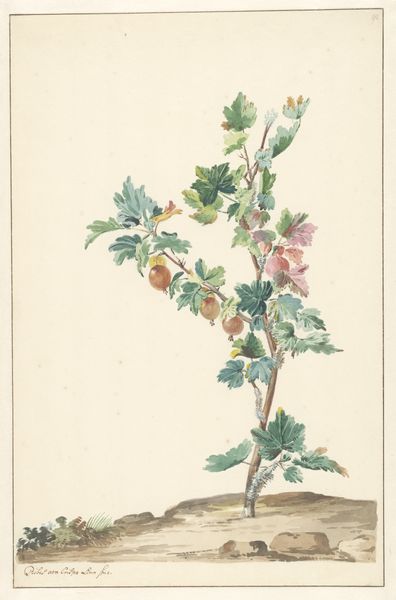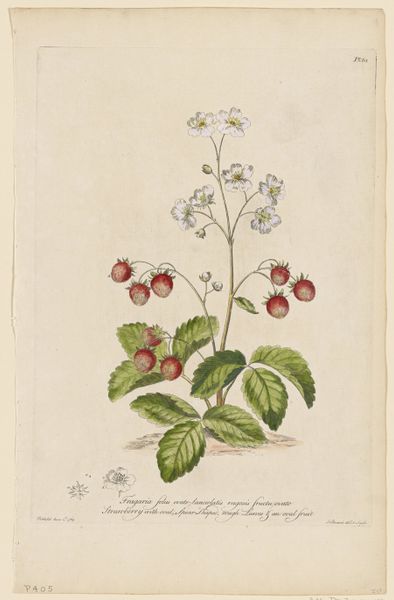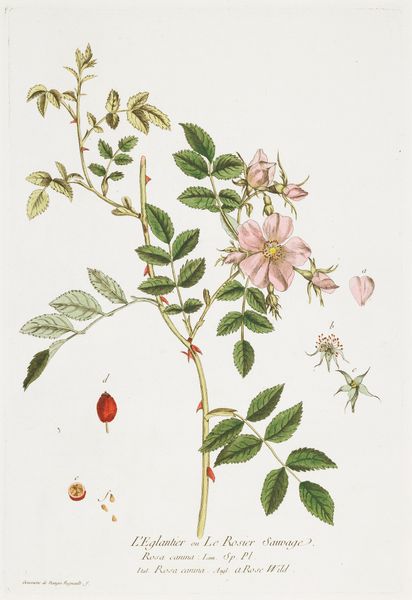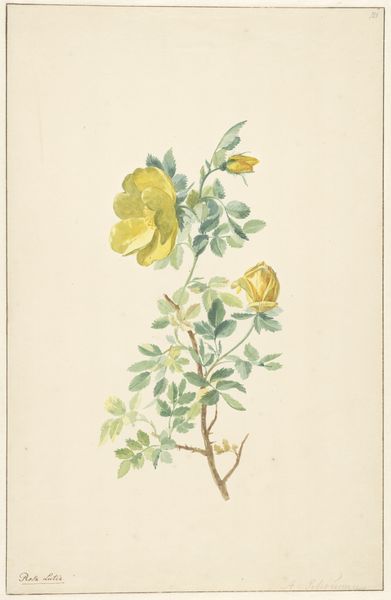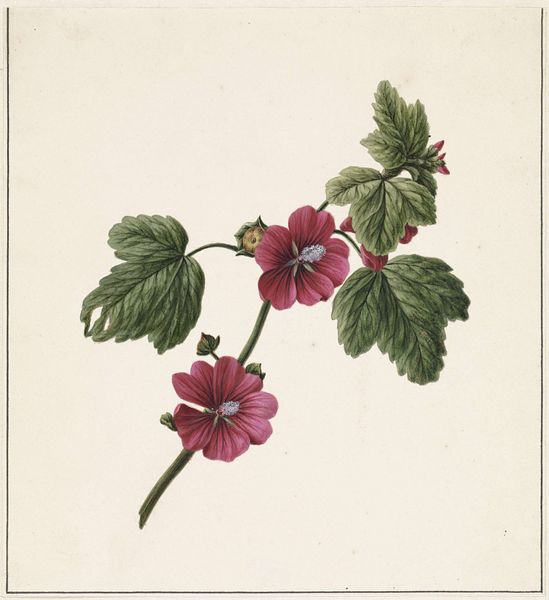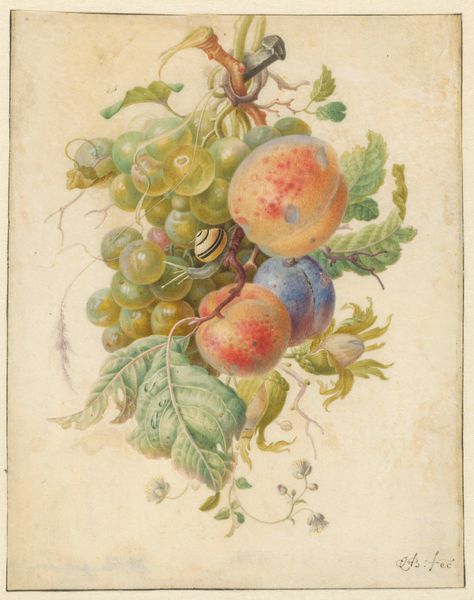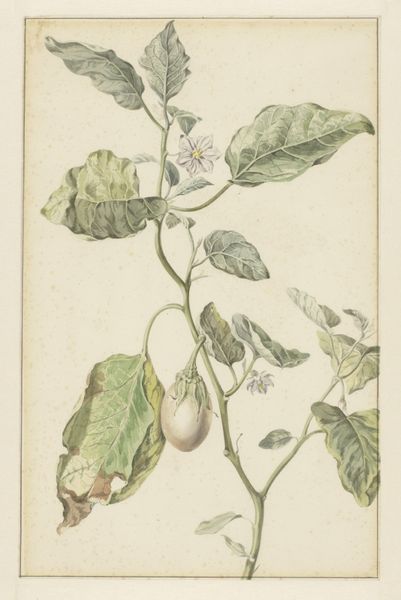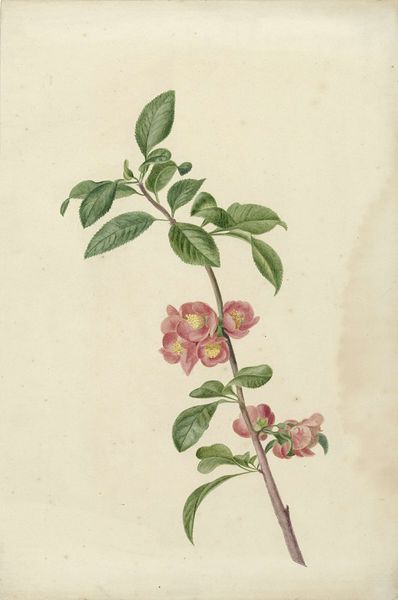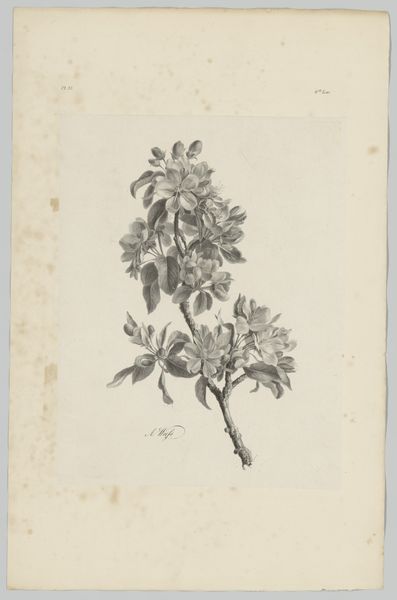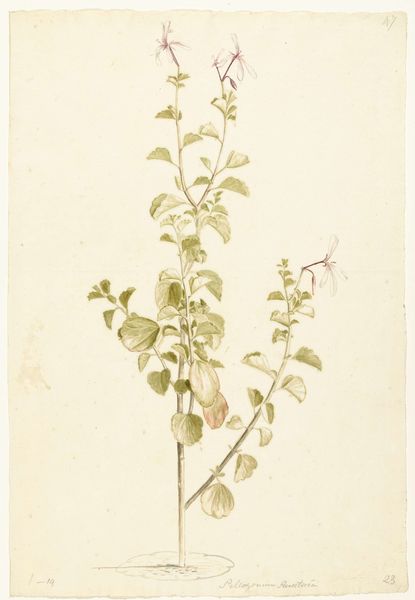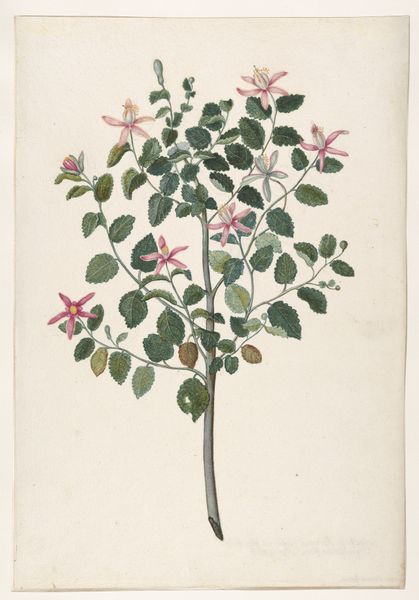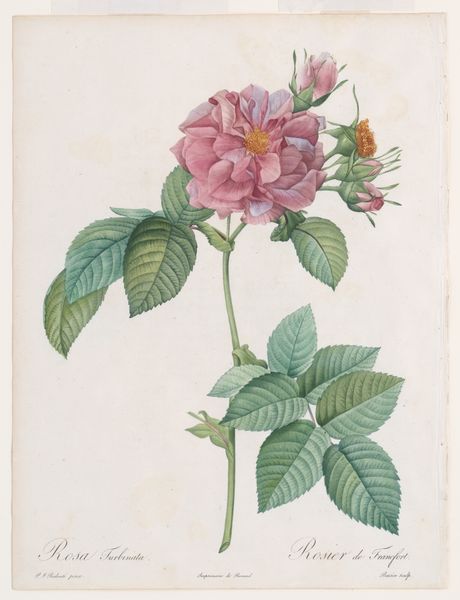
drawing, painting, watercolor
#
drawing
#
painting
#
watercolor
#
watercolour illustration
#
botanical art
#
watercolor
#
realism
Dimensions: height 306 mm, width 211 mm
Copyright: Rijks Museum: Open Domain
Curator: Willem van Leen’s botanical study, "Tak met rozenbottels," presents a delicate watercolor and drawing of a rosehip branch, dating from somewhere between 1775 and 1825. Editor: My initial impression is one of hushed stillness, a sense of botanical cataloging combined with an underlying vulnerability—those delicate leaves appear so exposed. Curator: The piece strikes me primarily through its structural composition. The carefully rendered leaves, symmetrically branching, showcase van Leen's dedication to objective representation and his understanding of botanical form. The central stem serves as the spine for an ordered array of shapes and textures. Editor: I read it through the lens of 18th-century societal values—specifically how botanical art often mirrored imperial interests and colonial exploration. Rosehips, symbols of health and resilience, become loaded signifiers of trade routes and the commodification of nature. There’s a quiet tension in depicting nature so scientifically when that same nature was being actively exploited. Curator: I would argue that we should also examine the delicate watercolor technique. Van Leen's use of translucent washes captures the play of light and shadow on the leaves, lending depth and nuance to an otherwise objective study. Note how the pigment pools to highlight veins. Editor: Precisely, and that use of light enhances the symbolic contrast between fragility and survival, resonating with the social vulnerability and resilience of marginalized communities throughout colonial history, and, moreover, the complex systems through which they exchanged medicinal and culinary plant-based knowledges to thrive in restrictive environments. Curator: I concede your perspective enriches our appreciation by imbuing this deceptively straightforward artwork with greater narrative heft. Editor: And analyzing artistic choices in conversation with complex sociocultural realities opens avenues to appreciate the interconnected histories represented here, not only botanical structure. Curator: Very true—a necessary approach for contextualizing what can sometimes feel purely aesthetic, transforming a mere floral image into a meditation on larger human stories.
Comments
No comments
Be the first to comment and join the conversation on the ultimate creative platform.
